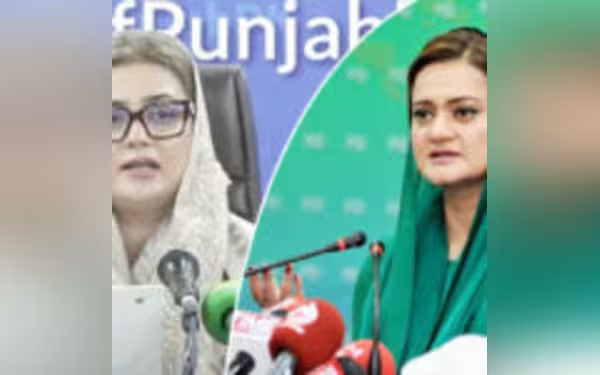Saturday, November 16, 2024 04:21 PM
Punjab Ministers Criticize PTI's Lahore Rally Turnout
- Punjab ministers mock PTI for low rally attendance.
- Only 3,500 chairs set up, turnout far below expectations.
- Azma Bukhari asserts Lahore remains a PML-N stronghold.
 Image Credits: pakistantoday
Image Credits: pakistantodayPunjab ministers criticize PTI's Lahore rally for poor turnout, highlighting disconnect with public support.
In a recent turn of events, Punjab's political landscape witnessed a significant moment as provincial ministers openly criticized the Pakistan Tehreek-e-Insaf (PTI) leadership for what they termed a "poor" rally in Lahore. The event, which was expected to draw large crowds, instead showcased a stark contrast between the party's claims of popularity and the reality on the ground. Senior Minister Marriyum Aurangzeb, along with Information Minister Azma Bukhari and other officials, expressed their disbelief at the turnout, highlighting the apparent lack of public interest in PTI's political agenda.
During a press conference, Aurangzeb pointed out that despite being granted permission to hold the rally, PTI failed to mobilize the masses. She stated, "PTI failed to attract the public due to its anti-state stance and politics of destruction." The ministers noted that the rally organizers were left waiting for Khyber Pakhtunkhwa Chief Minister Ali Amin Gandapur and his supporters, who did not arrive as expected. Aurangzeb questioned Gandapur's absence, asking why he could not reach the venue on time despite the open roads.
As the ministers continued their critique, they revealed that only 3,500 chairs were set up for the event, a number that fell drastically short of expectations. On social media, PTI leaders attempted to bolster their image by sharing old pictures, but this tactic quickly backfired as the truth of the low turnout became evident. Aurangzeb described the empty chairs as a "pathetic sight," further emphasizing the disconnect between PTI's claims of a revolutionary movement and the reality of their support.
Azma Bukhari, addressing the media, stated that the ground was empty and that PTI should acknowledge that Lahore does not belong to them. She firmly declared, "Lahore having a population of 200 million does not belong to PTI as it is and will remain a stronghold of the PML-N." This statement underscored the ongoing rivalry between the two political factions, with Bukhari asserting that the PTI could no longer claim that the government was obstructing their activities.
As the ministers provided a breakdown of the turnout, it became clear that the numbers were far from impressive. Bukhari reported that only a handful of supporters had arrived from various districts, with claims of participation ranging from 65 people from Gujranwala to just 5 from other areas. This lack of enthusiasm from the public was interpreted as a rejection of PTI's approach, which has often been characterized by protests and unrest.
The events surrounding the Lahore rally serve as a reminder of the shifting dynamics within Pakistan's political arena. The apparent disinterest from the public in PTI's agenda raises questions about the party's future and its ability to connect with the electorate. As the political landscape continues to evolve, it remains to be seen how PTI will adapt to these challenges and whether they can regain the trust and support of the people. The situation highlights the importance of genuine engagement with the public, as political success often hinges on the ability to resonate with the masses.













